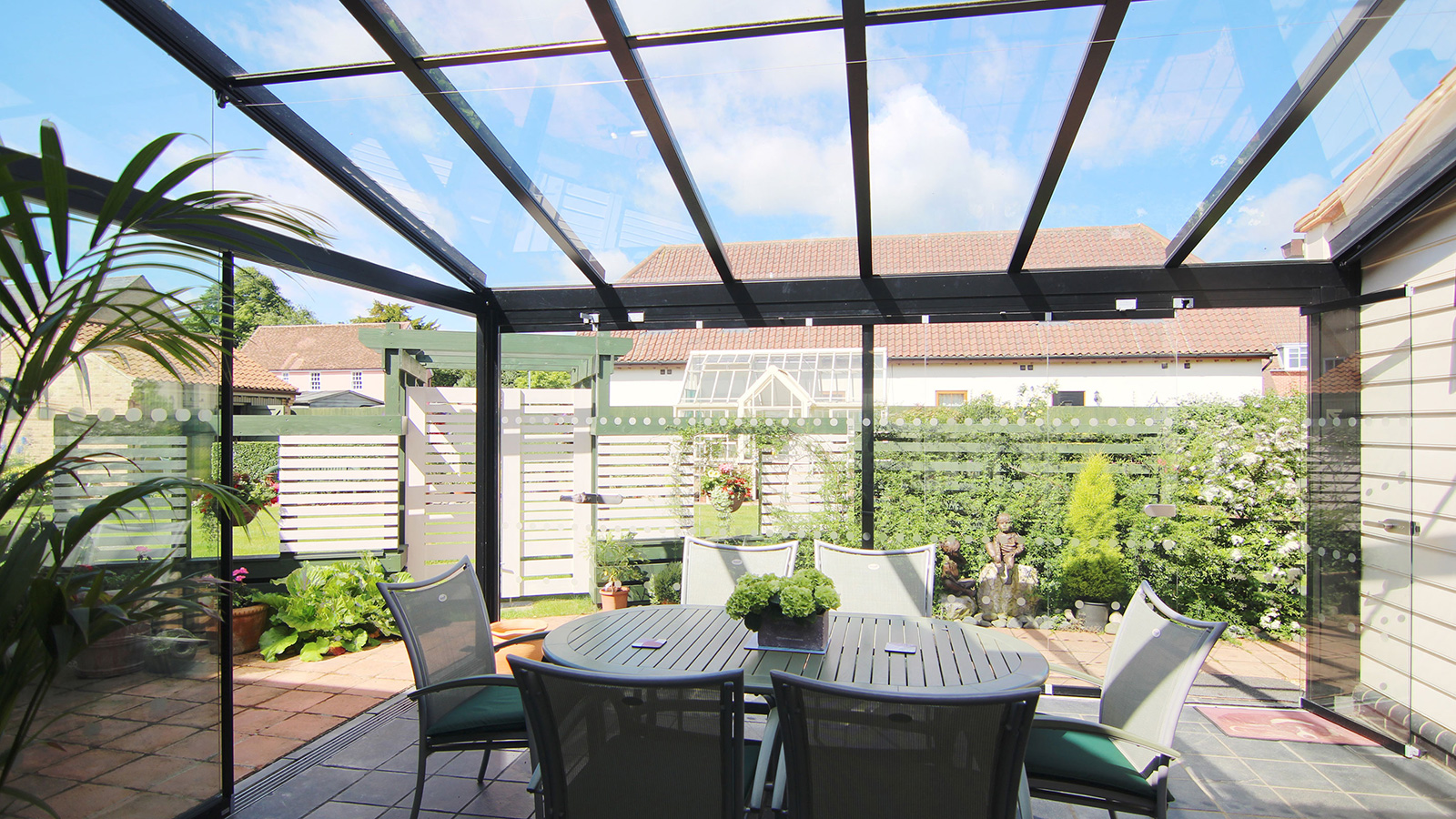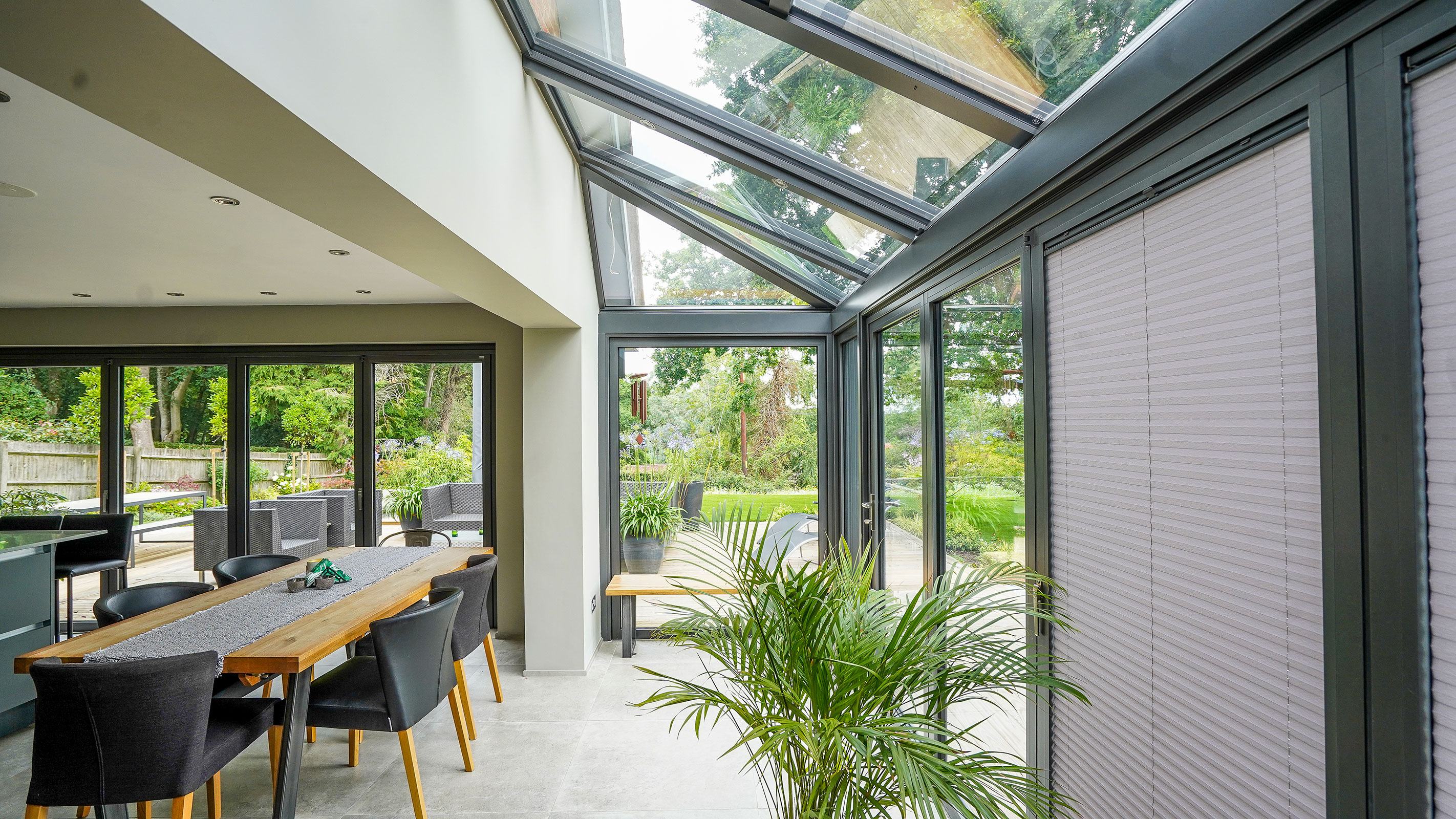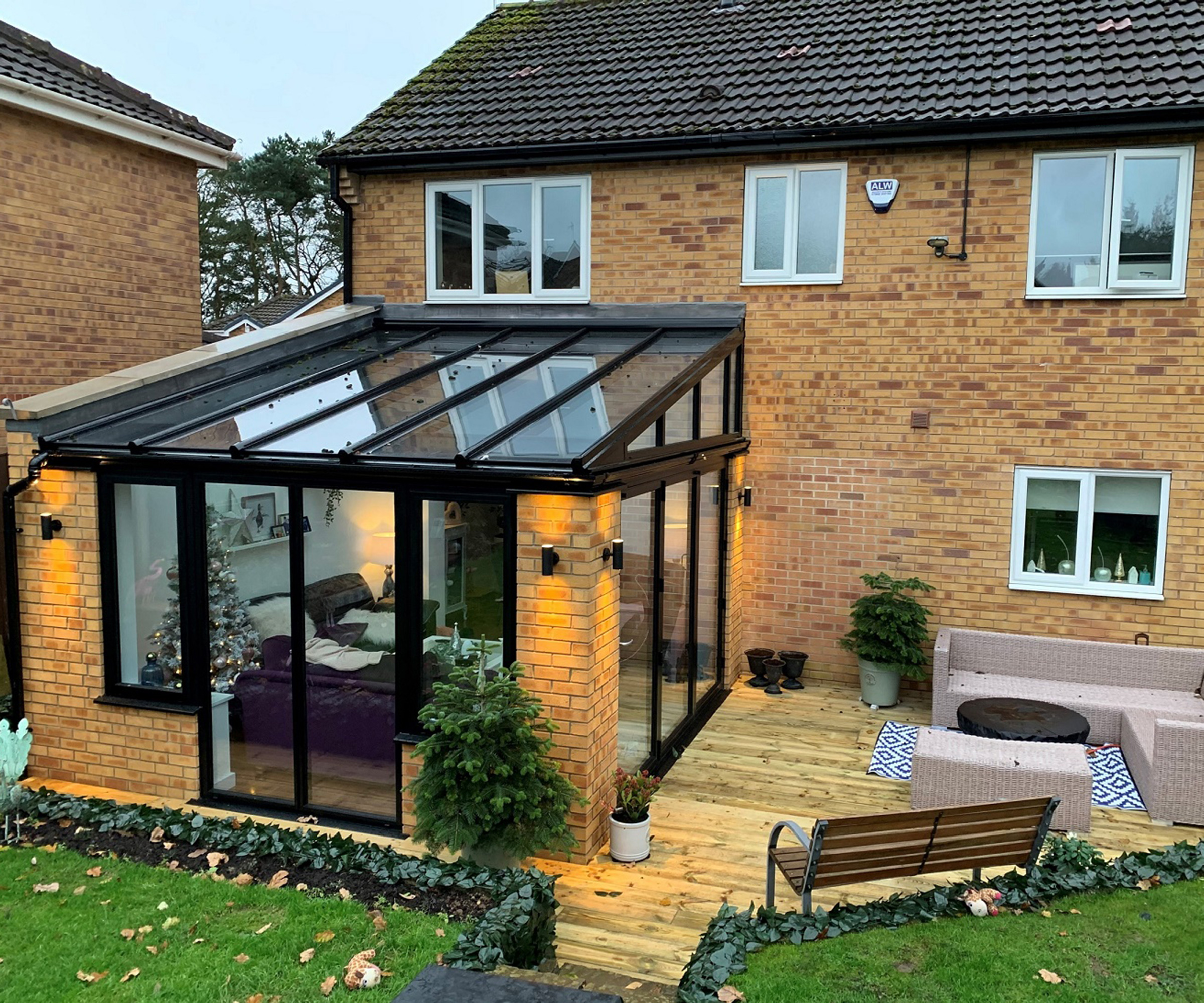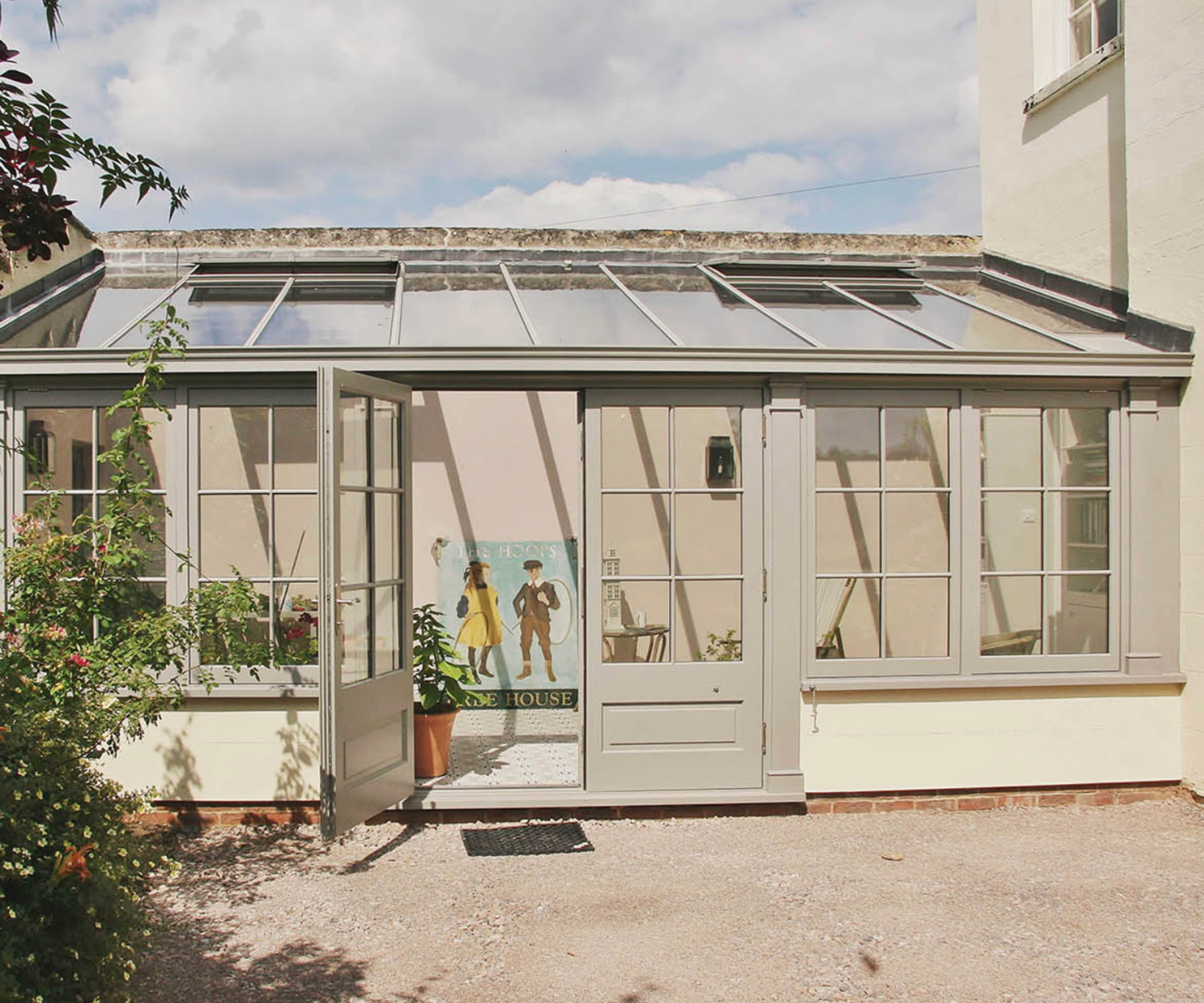Lean-to conservatory costs: Are they the cheapest option?
If you are after information on lean-to conservatory costs then we have all the advice you need in this handy guide. We look at what to expect to pay, as well as the best ways to cut costs

Lean-to conservatory costs are often one of the first things that draw people to this style of addition when looking at ways to add a glazed extension to their home. In fact, cost in general tends to be one of the driving factors in most homeowners' search for conservatory ideas that will best suit them.
What it is really important to realise here though is that while lean-to conservatory costs do lie at the lower end of average prices associated with adding a conservatory, there is still huge variation in the quotes householders receive.
If you like the idea of a lean-to conservatory this guide has everything you need to ensure that you go into the project fully armed with all the knowledge you need to keep in full control of your budget — no nasty surprises necessary.
Are lean-to conservatory costs lower than other styles?
The good news for anyone who loves the idea of a lean-to conservatory is that they are generally the cheapest way to achieve a new glazed addition, sitting right at the lower end of the price scale.
"Lean-to conservatories are a popular choice, usually because they're the simplest style and the cheapest option," explains Sean Bunyan, head of commercial operations at Eurocell. But how does this compare to other conservatory costs?
The most expensive option will be bespoke, hardwood or oak frame conservatories, coming in at anywhere between £30,000 to £40,000.
“A realistic cost for a 20m2 oak frame extension – with either a pitched roof conservatory or a flat roof orangery – would be from £3,500 per m2," advises George Allen, a design consultant at Oakwrights.
While the materials used to construct a conservatory undoubtedly play a huge part in the overall cost (with uPVC being cheapest material for conservatories and timber and aluminium lying at the top of the scale), there are other factors — in particular the size and shape of the new structure. And it is for this reason that lean-to designs win the prize for the most cost-effective type of conservatory.

What is a lean-to conservatory?
Conservatories come in all shapes and sizes but lean-to designs are particularly popular with homeowners after an affordable option as they are simple to construct.
"Lean-to conservatories are possibly the simplest of conservatory designs available," says John Evans, managing director at Stormclad. "Lean-to conservatories, with their low-pitched roofs, leaning into the side of a house are perfect for bungalows and homes suffering from limited space."
Lean-to conservatories feature a simple, slanted roof, flat in profile as opposed to a hip roof. The roof of the conservatory comes off the wall of the house at a slight angle.
"The design and structure consists of three walls built against an existing wall of your home and a roof that slants down over the conservatory,” further explains Sean Bunyan.
"Today's lean-tos can be an understated way to extend a home, particularly where simple, modest architecture is required to be either in-keeping with the existing property or to complement an already elaborate exterior," points out Mervyn Montgomery, founder, and joint director of Hampton Conservatories. "Lean-tos do not require much building height so they can be easily added to low single-storey properties or those where the ground floor height is in short supply.


Sean is head of commercial operations at Eurocell, who specialise in uPVC windows, conservatories, composite decking, flooring, fencing and more.
Will a lean-to conservatory suit my house?
"Homeowners should certainly take into account whether their house is one or two storeys when browsing their style of conservatory and what will suit it best, both in practicality and style," advises John Evans.
"For properties where space is limited, or where there is not much space under the eaves, like a bungalow, then a lean-to conservatory is a practical and stylish way to extend a property," says Ryan Schofield, managing director at Thames Valley Window Company. "Their versatile design is ideal for matching the style and dimensions of any home.”
Lean-to conservatories generally come in two styles — one which features a brick dwarf wall at the base, and the other which is fully glazed, right down to the ground. Those with dwarf walls tend to cost more.
More modern, contemporary styles of lean-to conservatory can feature reversed roofs, whereby the sloping roof slants towards the house as opposed to away. This can look great and allows you to install 'hopper' windows at the top of the wall facing the garden for ventilation.
"Buyer beware. Lean-tos haven't always had the best reputation so it's usually worth using a well-known manufacturer if you want to add value to your home via a lean-to, and when you come to sell, it might be worth badging your lean-to as a conservatory or orangery," warns Mervyn Montgomery.

Mervyn Montgomery, joint director of Hampton Conservatories, has been at the helm of the bespoke hardwood conservatories and orangeries business for over 40 years.
How much do lean-to conservatories cost?
There are many variables that will affect how much you end up paying for a lean-to conservatory. Most of these come down to the approach you take to designing a conservatory, such as the material and glazing type you opt for and the size you require. Your ground conditions could also have an effect.
Whether you decide to go to a conservatory specialist or a builder for your new conservatory, you need to be sure what your quote includes. In most cases it should cover the groundworks, a base, the walls and frames as well as roofing. glazing and any work involved in dealing with the opening between your existing home and the new structure. In some cases, quotes might include insulation and final decorative work such as plastering or painting.
“Cost will vary depending on the size of your build and how much material is used for your bespoke conservatory," explains Sean Bunyan. "Average costings can range anywhere between £8,000 and £22,000”
Your choice of roof covering will heavily influence costs — those upper prices would be for a tiled roof conservatory, while the lower prices would involve a polycarbonate roof.
"All of Thames Valley Window Company conservatories are bespoke, but an approximate starting price per square metre would be £2,400," says Ryan Schofield. "The price all depends on size, material, glazing and shading options."

Ryan is managing director at Thames Valley Windows. He has over 20 years experience, within the glazing industry. TVW is a family owned business, established in 1984 by two brothers, Ryan's dad, Paul Schofield, and Mark Schofield. Ryan took over the business in 2019 when Paul and Mark retired.
What are the pros and cons of lean-to conservatories?
Lean-to conservatories have a lot going for them. They suit all styles of properties and are one of the best conservatories for bungalows where there is often limited space under the eaves.
So, what other benefits does this conservatory style hold?
Pros:
- Suit both contemporary and traditional homes
- Cost effective
- Available in all kinds of sizes and with many frame options
- Simple design makes them low maintenance and easy to repair
- Suitable for awkward spaces
- Great option for bungalows and terraces with little space under the eaves
- Large expanses of glazing maximise light
- Add value to your home
When weighing up which type of conservatory will best suit you, it is important to be aware of the disadvantages of the various styles too.
Cons:
- Can be hard to find lights and fans to suit the sloping ceiling
- Can be damaged in heavy winds
- Size can be limited due to nature of roof structure

While lean-to conservatories are a great way to extend your home cost effectively, they are not the right option for everyone. For many people, it comes down to deciding on whether an extension or conservatory will be the best way for them to add space — and lean-to extensions can, like their conservatory counterparts, be very kind on the wallet.
That said, extensions generally take longer to build, are more costly and result in more disruption — although the uplift in value to an extisting house they can offer is generaly greater than with a conservatory.
Get the Homebuilding & Renovating Newsletter
Bring your dream home to life with expert advice, how to guides and design inspiration. Sign up for our newsletter and get two free tickets to a Homebuilding & Renovating Show near you.
Natasha was Homebuilding & Renovating’s Associate Content Editor and was a member of the Homebuilding team for over two decades. In her role on Homebuilding & Renovating she imparted her knowledge on a wide range of renovation topics, from window condensation to renovating bathrooms, to removing walls and adding an extension. She continues to write for Homebuilding on these topics, and more. An experienced journalist and renovation expert, she also writes for a number of other homes titles, including Homes & Gardens and Ideal Homes. Over the years Natasha has renovated and carried out a side extension to a Victorian terrace. She is currently living in the rural Edwardian cottage she renovated and extended on a largely DIY basis, living on site for the duration of the project.

